A Growing Need for Information About Cannabis Allergies
Nobody likes allergies, right? In fact, everyone I know absolutely despises them. According to the American College of Asthma, Allergy, and Immunology, more than 50 million Americans suffer from allergies each year. Cumulatively, that’s a huge number of people who will experience some sort of allergic reaction at a point in their life, whether it be to a particular variety of food, pollen, mold, or perhaps a more specific irritant such as cats.
What if, however, you found yourself with an allergic reaction to your job, or to something you greatly enjoyed, or, even worse, to something that you need? Stories of cannabis allergies have been emerging at a growing rate since legalization and reveal that they can frequently strike down budtenders, recreational consumers, and medical patients with a variety of symptoms.
For example, here is one of the typical communications we receive on the topic:
“I have tried one medical marijuana, and I used it for about 12 days. I found I was allergic to it. Then just to verify it was the hemp, I smoked a little, and got the same reaction. Bad allergies, total constant nasal drip, watery eyes, stuffy head. My eyes would even burn at times. Is there something equivalent for pain, that will not give me such bad effects? Or is there somewhere I can investigate further? I think it really does some of my arthritic pain. Thank You.” – Anonymous
Given the increasing frequency of these stories about people being allergic to cannabis, and the apparent need for more information, we felt it necessary to investigate the matter further.
An Unusual Background: Cannabis Allergy Research
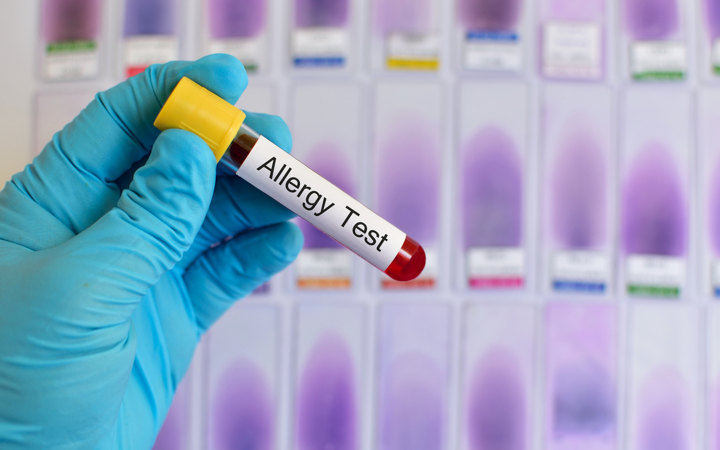
After scooting beneath the radar of the scientific community for the longest time, marijuana allergies appear to be on the rise. Just as cannabis consumption has been trickling towards the mainstream in the U.S., cannabis allergies have been attracting increased attention from researchers. The correlation between the rise in allergies and the increase in legalization initiatives is surely significant.
From the outset, we should outline a number of quixotic attributes specific to cannabis and its production that make it particularly interesting as a source of allergies. First off, similar to plants such as ragweed, cannabis pollen grains are very buoyant, allowing for distribution across many miles, which can increase their effectiveness as an irritant. Though typically only produced by male plants, pollen can also be produced by females that express hermaphroditic male flowers. That there are a variety of preparations of cannabis sativa adds another level of complexity.
As you might be well aware, there are a multitude of ways in which cannabis products can be consumed. They can be smoked, vaporized, chewed, taken as a tincture, or used as a topical lotion. In addition to these factors, the isolation of female flowering plants, which aims to prevent pollination, increases the plant’s psychoactive properties by raising its THC content. As a result, the potency of cannabis has increased drastically over the years. Tragically, this could also play a role in allergic disease because THC has been suggested as a potential cannabis allergen.
Can You Really be Allergic to Cannabis?

Allergies are an immune overreaction by the body attempting to protect the respiratory system from outside invaders. The antibodies produced by the body succeed in keeping the perceived foreign invaders out, but also cause the symptoms characteristic of allergic responses. Pollen, the most common allergen, is a powder released by trees, grasses, and weeds to fertilize the seeds of neighboring plants. Mold, somewhat differently, is a spore that grows on rotting logs, dead leaves, and grasses. While dry-weather mold species exist, many types of mold thrive in moist conditions.
Perhaps not so shockingly, given that both these allergens are associated with cannabis, researchers in Belgium recently published an article entitled “Emerging allergens: Cannabis.” The researchers focused in particular on cannabis sativa, one of the two species we all know colloquially as marijuana. They found that the plant can cause a number of allergic symptoms such as allergic rhinitis (hay fever), conjunctivitis (pink eye), skin rashes, and asthmatic symptoms when smoked, inhaled, or chewed. Yikes! On reading that our interest was piqued. This is a thing; an actual thing!
What are Cannabis Allergies and Their Symptoms?
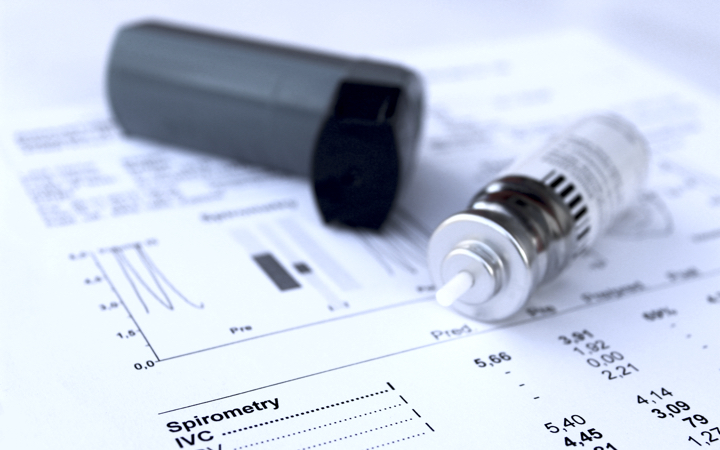
Before getting too far ahead of ourselves, it’s important to differentiate between legitimate cannabis allergy symptoms and allergic reactions to substances found in cannabis that are actually not inherent to the plant, such as molds. Put simply, cannabis can become moldy when stored and people with mold allergies may have reactions. Some people could even experience reactions to both the plant and mold.
It’s a tad confusing, but we do have proof. The presence of fungal contamination in marijuana samples has been demonstrated, occasionally being capable of putting patients with sub-par immune systems at risk for invasive disease. A case of allergic bronchopulmonary aspergillosis attributed to the fungal contamination of a patient’s marijuana supply has even been described. Doesn’t sound good, right? It took a course of steroids to remedy the situation.
To be pedantic, a true cannabis allergy is a reaction to a specific substance contained within the cannabis plant. In “Cannabis Sativa: the unconventional ‘weed’ allergen”, Ocampo and Rans provide an excellent review of the existing literature on the subject. They outline how reports in the medical literature have described episodes of allergic reactions, hypersensitivity, and even anaphylaxis to cannabis in its various forms.
Cannabis pollen inhalation has been noted to cause symptoms of allergic rhinitis, conjunctivitis, and asthma. Pollen or smoke exposure has resulted in nasal congestion, rhinitis, sneezing, conjunctival injection, pharyngeal pruritus (itchy throat), coughing, wheezing, and dyspnea (difficulty breathing).
Cases of skin irritations thought to be associated with cannabis consumption have been described. Skin contact through the handling of plants has been associated with urticarial (hives), generalized pruritus (itching), and periorbital angioedema (swelling). Anaphylaxis (a serious reaction) associated with ocular symptoms, urticaria (hives), angioedema (swelling), dyspnea (difficult breathing), and dysphonia (difficulty in speaking) has been reported as a result of hemp seed ingestion. Allergic asthma triggered by seasonal and occupational exposure to cannabis also has been reported.
Cannabis consumption has even been speculated as a contributing factor in a case of eosinophilic pneumonia where the symptoms began after recreational exposure to marijuana. (And you were about to complain about those itchy eyes, you big softy!)
Varying Means of Exposure to Cannabis Allergens
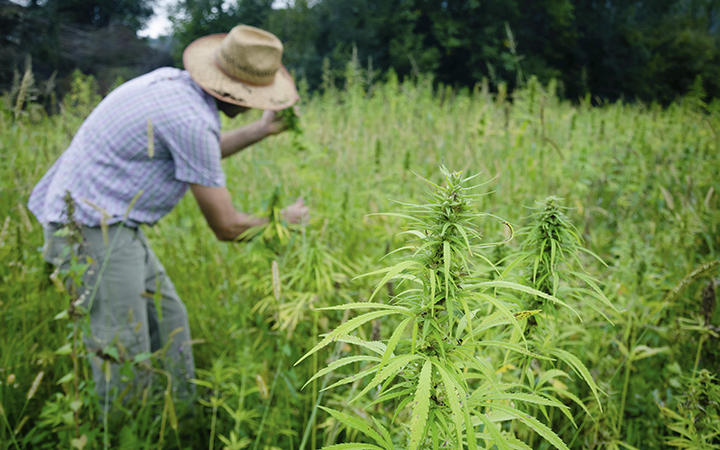
Much like other airborne substances that can trigger allergic reactions (pollen, we’re looking at you!), cannabis sensitization can be influenced by aerobiology. People who live in areas where large quantities of marijuana plants are grown may be especially prone to experiencing allergic reactions to the pollen.
In Omaha, Nebraska, where the plant reportedly grows wildly and commercially, one study looked at cannabis sensitization. This study noted that 61% of 127 patients with allergic rhino conjunctivitis and/or asthma symptoms had a positive cannabis pollen skin prick test reaction.
Rhino conjunctivitis is characterized by one or several of the following symptoms:
- Nasal congestion
- Runny nose
- post-nasal drip
- Sneezing
- Red eyes
- Itching of the nose or eyes
Seventy three percent of randomly selected patients in a cannabis-sensitive subgroup reported respiratory symptoms during the cannabis pollination season. Sensitization associated with cannabis consumption also has been suggested. Ominously, this study demonstrated a higher prevalence of skin test reaction positivity in marijuana smokers (14.6%) and even more so in those who reported frequent consumption (18.2%) compared with nonsmokers (5%).
For all the aspiring budtenders out there, allergic reactions associated with occupational exposure to cannabis sativa have been shown. A medical marijuana grower, who previously tolerated personal recreational marijuana consumption, developed skin irritations from handling plants. Two patients who did not consume cannabis noted nasal and respiratory symptoms after several years of work in a laboratory. One patient had more pronounced symptoms with handling of the sinsemilla (high-THC marijuana from the female plant), suggesting the possible allergenic role of THC in this case.
Whether in or outdoors, it seems that there might not be anywhere to hide. Not only that, but some European studies have investigated potential cross-reactivity between cannabis and other plants. Gamboa et al reported on a case of a 28-year-old cannabis smoker with progressive allergic symptoms who went on to develop urticaria to peach peel, food pollen syndrome to several foods, and anaphylaxis to tomato, pepper, and fig. Ebo et al further suggested allergic cross-reactivity to fruits, vegetables, and nuts, and even the possibility of a “cannabis–plant food syndrome.”
Identifying Cannabis Allergens
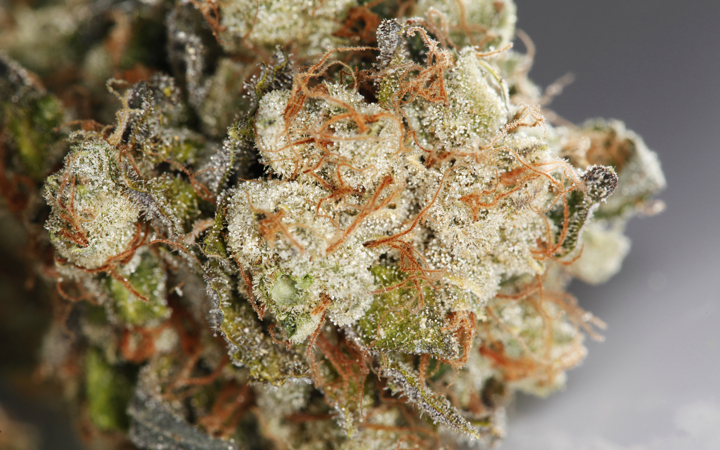
As we have seen so far, cannabis pollen has been shown to cause allergic reactions in several studies, and individuals who show sensitivity to it are usually also sensitive to pollen from other plants. However, this does not explain the cases of cannabis allergy caused by female plants with no signs of hermaphroditism. In these instances, something else must be to blame.
There have been efforts to identify specific allergens for cannabis with scientists pinpointing a number of possible culprits. A study published in 1971 suggested cannabinoids as allergens based on positive skin prick test reactions in case patients. As we’ve already mentioned, THC was specifically suggested in the case of a forensic laboratory worker handling sinsemilla variants of cannabis sativa.
More recently, a study identified a nonspecific LTP (ns-LTP) relevant to cannabis and named it Can s 3. LPTs (Lipid Transfer Proteins) are responsible for the transfer of lipids and other fatty acids across cell membranes and are often involved in food allergies. Further investigation by both Larramendi and Ebo supported the potential of Can s 3 as a major allergen in cannabis allergy.
Additional studies have found ns-LTPs on immunoblotting, an analytical technique used to detect specific proteins. One study, aiming to define cannabis allergens, identified potential allergens including a protein called RuBisCO and a 23-kDa oxygen-evolving enhancer protein 2. Other less consistently demonstrated allergens included adenosine triphosphate synthase, phosphoglycerate kinase, glyceralderhyde-3-phosphate dehydrogenase, and luminal binding protein.
Though a lot of this terminology may seem impenetrable to the layman, the identification and characterization of cannabis allergens is crucial to the further understanding of allergic sensitization specific to this species of plant.
How is a Cannabis Allergy Diagnosis Made?

If you think you might have a cannabis allergy, what’s your next step? What do you do? Where do you go? Well, it’s pretty simple. You book an appointment with an allergist, of course.
The evaluation of cannabis allergies is dependent largely on skin testing. A skin prick test can detect if a person is sensitive to a specific allergen. If sensitive, to protect the body from a perceived threat, the immune system produces a type of antibody called immunoglobulin E (IgE). An allergen-specific IgE blood test is done to check whether a person is allergic to a particular substance. Because IgE antibodies are unique to each allergen, checking for specific variants in the blood can help determine if an allergy is present. The tests are not invasive and tend to produce quick results.
A positive skin prick test to a particular allergen does not necessarily indicate that a person will experience a reaction caused by that allergen. Therefore, healthcare practitioners must compare the skin test results with the time and place of a person’s symptoms to see if they match. If the results of prick tests are negative, they may be followed by intradermal tests, which give allergists more details about what’s causing the underlying symptoms. After either test, the area of the skin is observed for about 15 minutes to see if a reaction develops. The “wheal” (an itchy, red bump) and “flare” (surrounding redness) indicate the presence of an allergy antibody. The larger the wheal and flare, the greater the sensitivity to the allergen.
Although skin testing may seem simple, it must be carried out by trained practitioners with an understanding of the variables and risks of the testing procedure. Extracts for testing are typically created with crushed buds, leaves, and flowers of the cannabis plant. Differences in source material and extraction techniques can introduce significant variability while contaminants and additives in the native allergen can cloud diagnostic evaluation. Consequently, without reliable standardized diagnostic testing options and often poor correlation between testing and true clinical allergy, the importance of patient history in making evaluations is paramount.
Is Treatment Available for Cannabis Allergies?
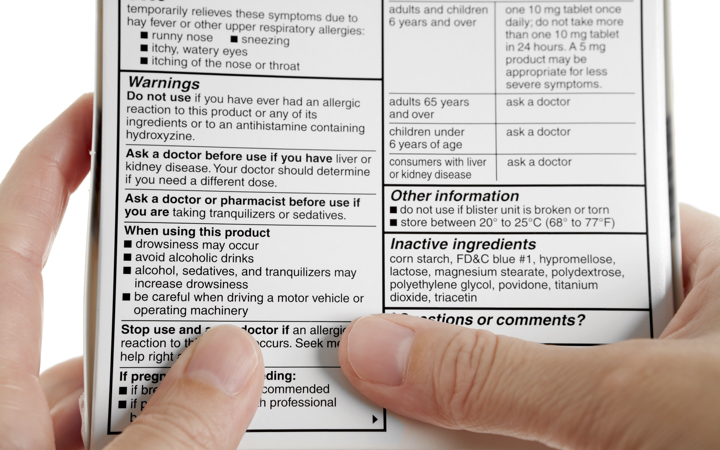
William Silvers, a Colorado allergist, published an editorial in February 2016 discussing three recent patients with symptoms suggestive of marijuana allergies. He provides a great insight into the practical experience of an allergist dealing with potential marijuana allergies in a state where cannabis has been wholly legalized.
One patient, a frequent marijuana smoker, experienced nasal congestion that later developed into a chronic cough once he began work as a trimmer at a marijuana growth facility. Treatment with a nasal spray and inhaler helped to reduce symptoms.
A second patient, without any prior history of asthma or allergies, demonstrated symptoms after exposure to marijuana when he began work in a grow facility and dispensary. He was diagnosed as having asthma exacerbated by marijuana exposure with hay fever, eye inflammation, and suspected contact dermatitis to marijuana. Treatment recommendations included minimizing his environmental exposure to marijuana as much as possible. The patient significantly improved with a prescribed medication program.
The final patient, a heavy marijuana consumer, was referred by an emergency department physician with suspected anaphylaxis after exposure to marijuana smoke. He admitted to smoking concentrate, a carbon dioxide extracted marijuana wax, that contained up to 60% to 70% THC levels. Puzzlingly, he showed a lack of sensitization to marijuana extracts and pollen tests were negative. The wax concentrate might have contained a contaminant or additive to which the patient reacted.
Despite the low, mumbled presentiments of an epidemic, in Dr. Silvers’ opinion:
…the relatively low numbers of “presentations since legalization of marijuana in Colorado suggests that cannabis sativa is a mild allergen, with significant exposure required to elicit respiratory and dermatologic allergic reactions.”
This sounds like good news for cannabis lovers and, as demonstrated, treatment is available for allergy sufferers depending on the seriousness of the reaction. Unfortunately for the chronically-allergic cannabis consumer, as with other allergens, avoidance is recommended.
Still, factors such as local aerobiology and occupational exposures need to be taken into consideration. Antihistamines, intranasal steroids, and nasal decongestants can be used to treat symptoms of allergic rhino conjunctivitis. Asthma can be treated with Beta agonists or an inhaled corticosteroid if required. EpiPens should be prescribed for patients with a history of anaphylaxis.
There have even been rare cases of treatment with immunotherapy in the literature. One report demonstrated desensitization in two patients and improvement was noted in a cohort of hemp workers who received immunotherapy extract twice a week for a year. For those experiencing symptoms, we’re not claiming that a cannabis-allergy Kryptonite has been discovered, but there are certainly a variety of options out there.
Conclusions
Although still relatively uncommon, allergies associated with cannabis are being reported with increased frequency. Allergic reactions as severe as anaphylaxis attributed to cannabis have been noted with sensitization associated with pollinosis, cannabis consumption, occupational exposure, and potential plant cross-reactivity. However, there is no reason to panic. It’s to be expected that the reporting of cannabis allergies would increase as cannabis consumption became more mainstream.
Cannabis allergies can be treated in much the same way as other allergies but the lack of standardization in testing limits validation and the widespread applicability of diagnostic testing. Much research is still needed to more accurately define allergens, develop a standardized extract, establish diagnostic specificity, and clarify treatment options for patients.
Without a shadow of a doubt, the legal limitations to obtaining cannabis extracts poses challenges as the only federally approved source of cannabis species in the United States is located at the University of Mississippi, while the illicit nature of cannabis consumption is still creating obstacles for patient reporting. If we’re to learn more about cannabis allergies, we need to overcome the former by enabling more wide-ranging research, while eliminating the latter by encouraging silent cannabis allergy sufferers to breach the surface of public opinion and engaging them in a non-judgmental way.











